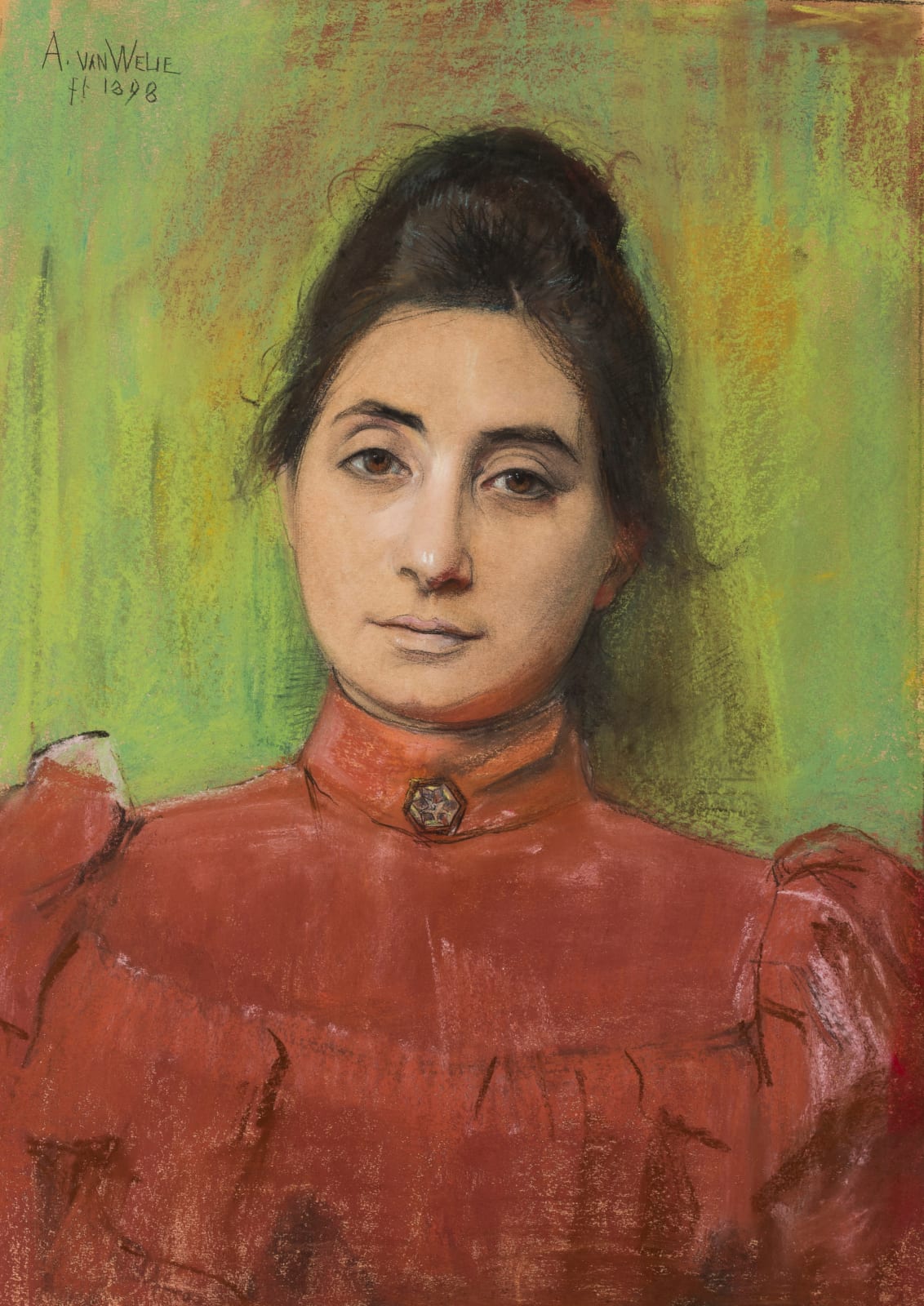Antoon van Welie (1866-1956)
Johannes Antonius (Antoon) van Welie was born in the small town of Afferden, Gelderland. He pursued his artistic studies in Belgium, soon garnering critical acclaim in Paris. He lived between Paris, London and Rome, where he maintained a studio in Vatican City and received Papal commissions. A protagonist of the international Symbolist movement in his early career, Van Welie became the most celebrated Dutch portraitist of his generation. His portraits were highly sought after by European high society and celebrities, including Sarah Bernhardt and Isadora Duncan and he exhibited at the galleries of Bernheim Jeune and George Petit in Paris.
The present portrait was most likely first exhibited in 1899 in Antwerp, in an annex to the Royal Museum of Fine Arts. At the request of one of his earliest supporters, chief curator Pol de Mont, Van Welie contributed approximately thirty-five works to the exhibition, including twelve portraits. De Mont subsequently published an article in the British magazine The Studio, praising Van Welie alongside Toorop, Khnopff, and Minne, effectively launching his international career. That same year, Van Welie’s exhibition travelled to Galerie De la Bodinière in Paris, explaining how this early portrait entered a French collection.
Although neither exhibition was accompanied by a catalogue, the model depicted here is possibly Agnes Johanna Aronstein-Lewin (1869-?), based on the likeliness of her Whistlerian portrait in a private collection, Belgium. The Lewin family, originally from Germany, relocated to ‘s Hertogenbosch, where Agnes’s older sister, Antonia Lewin (1858-1938), was a student of Van Welie. Portraits dated 1898 of the family—including the patriarch Falk Lewin (1829-1899) and Antonia and Agnes—were exhibited that same year in a Dutch group show. In 1895, the twenty-six-year-old Agnes married German-born Joseph Aronstein (1867-1940), and the couple lived in Brussels. During World War II, Agnes lived in Barcelona, but otherwise, little is known about her life.
Provenance
Galerie de la Bodinière, Paris, 1899Private collection, France
Exhibitions
Antwerp, Pavillion Museum voor Schone Kunsten, Antoon van Welie, 1899
Paris, Galerie de la Bodinière, Antoon van Welie, 24 October – 24 November 1899
Literature
P. de Mont, "Antoon van Welie", De Vlaamse School, 1899, pp. 121-140 (as "een andere dame in rood gekleed op gele fon")K. van Lieverloo & P. Roelofs, Antoon van Welie. De laatste decadente schilder 1866-1956, Zwolle/Nijmegen 2007, p. 108



